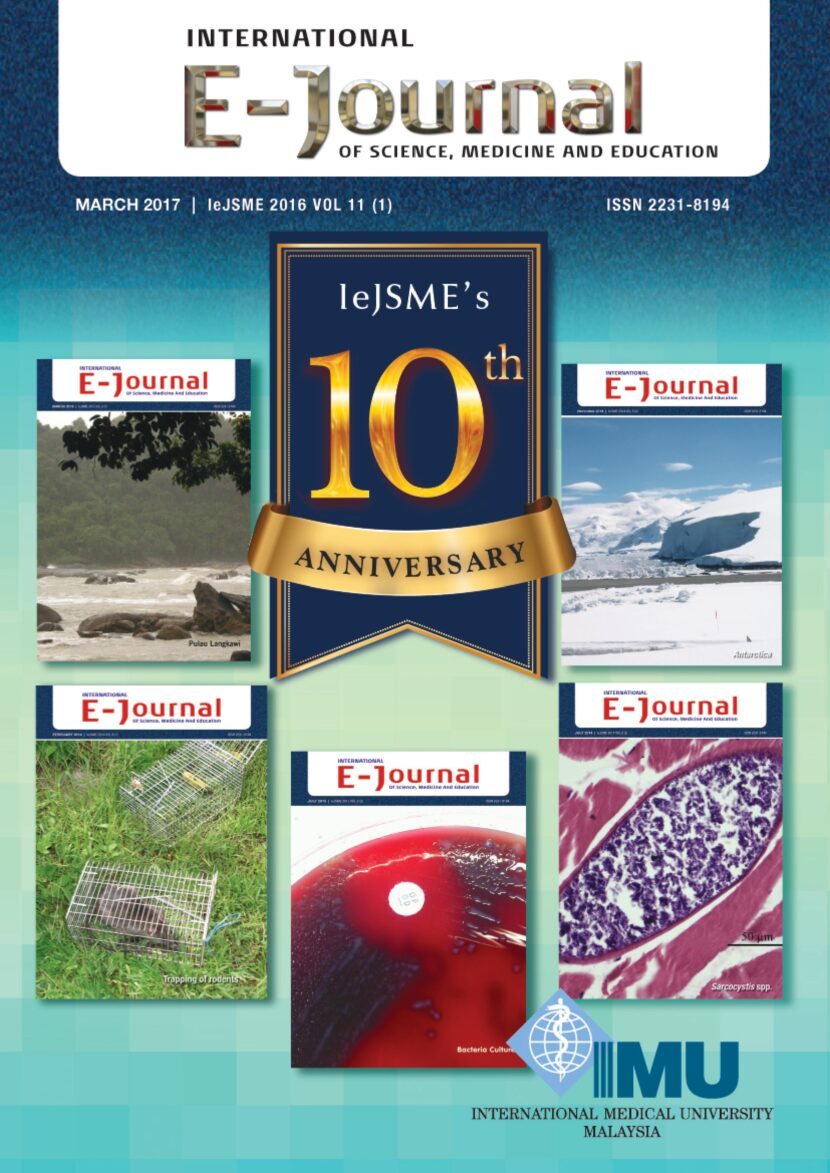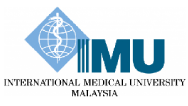Author: Pei Kuan Lai
Editorial Board and Contents
Metabonomics in translational research – Current status
Author: Yulan Wang
Keywords: Translational research, biomarkers, metabolic diseases, drug resistant.
Citation: IeJSME 2017 11(2): 1-3
Narrative Medicine: An unexplored perspective in the medical curriculum to enhance patient-centredness and empathy in medical students
Authors: Chandramani Thuraisingham, Sivalingam Nalliah.
ABSTRACT
A medical narrative is a physician-patient dialogue, where the physician listens carefully to fragments of the patient’s story, while interpreting their hidden messages and word sequences, as well as observing their gestures and body language. This aspect of the therapeutic relationship contributes to deciphering symptoms which are not apparent in the conventional interview and contributes to a much broader perspective of illness and health.
The arts and the humanities have always been inseparable from each other in medical education. In this biomedical revolution, the humanities are needed now more than ever before to bridge the divides that separate the physician from the patient, from self, from colleagues, and society.
Narrative Medicine (NM) which aims to treat the whole person, and not just the illness, is an emerging patient- centred discipline in medical schools that can humanise medical care and promote empathy. NM helps medical students cope with the suffering of their patients as well as their own emotions by reducing the anxiety and threat that come with illness, thereby providing a psychologically-sound foundation for the development of self-reflection and empathy.
NM facilitates medical students’ adoption of patients’ perspectives with the hope of ultimately leading to more humane, ethical and empathetic healthcare for their patients. The discipline of NM is critically examined in this review paper from the perspective of external and internal stakeholders.
Keywords: Narrative medicine, curriculum, patientcentredness, empathy, medical students.
Citation: IeJSME 2017 11(2): 4-13
Gender, citizenship and health-related quality of life: An overall perspective from Malaysia
Authors: Makmor Tumin, Ahmad Farid Osman, Nurhidayah Abdullah, Sook Lu Yong.
ABSTRACT
Objectives: Health-related quality of life (HRQoL) is an essential dimension of overall human quality of life, in which disparities have been hypothesised between women and men, as well as between citizens and non-citizens of a country in past literatures. This study is to evaluate and compare the HRQoL of citizens and non-citizens living in greater Kuala Lumpur and Johor Bahru, as well as comparing HRQoL between genders.
Materials and Methods: The SF-8 questionnaire was used to collect information from 1,708 respondents (1,032 Malaysian citizens and 676 non-citizens), via face-to-face interview between October and December 2015.
Results: Overall, respondents reported moderate HRQoL. Non-citizens reported better HRQoL than the Malaysian citizens, while men reported better HRQoL compared to women (for both citizens and non-citizens).
Conclusions: The HRQoL of both citizens and non-citizens’ in Malaysia could be improved. Measures should be taken to remove the disparity in HRQoL between men and women, aiming to achieve equal health status for both genders.
Keywords: accessibility; gender; health; Malaysia; quality of life.
Citation: IeJSME 2017 11(2): 14-23
Vigilance in detecting traumatic blunt neck injuries: A case report
Authors: Mohd Razaleigh Yusof, Tony Yong Yee Kong, Andee Dzulkarnaen Zakaria.
ABSTRACT
There has been an increase in the number of Motor Vehicle Accidents (MVA) in Malaysia throughout the years. Although blunt neck injury is uncommon, it is associated with severe, permanent neurological deficit with risk of mortality. This case is a classical presentation of a young male involved in a MVA who sustained head and neck injuries of varying severity. After a short symptom free interval, the patient started to develop neurological signs. Presenting signs and symptoms include Horner’s syndrome, dysphasia, hemiparesis, obtundation or monoparesis. A computed tomography (CT) scan of brain must be done and if the findings showed that there is no intracranial bleeding (ICB), high suspicions with further evaluation should be done. Confirmation can be obtained by Doppler ultrasonography, magnetic resonance imaging, magnetic resonance angiography (MRA), CT angiography (CTA) or catheter angiography to rule out carotid artery injury.
Keywords: Carotid artery dissection, blunt neck trauma.
Citation: IeJSME 2017 11(2): 24-29
Occult primary spontaneous pneumothorax
Authors: Yong-Ting Tai, Chin-Voon Tong.
ABSTRACT
We report a case of occult primary spontaneous pneumothorax in a 30 years-old woman. She developed symptoms and signs that were suggestive of pneumothorax. However, chest radiograph failed to reveal pneumothorax. Therefore, we proceeded with computed tomography (CT) thorax which revealed significantly moderate right pneumothorax. The diagnostic approach and the management of this case are discussed.
Keywords: Spontaneous pneumothorax, occult pneumothorax, chest radiograph, CT thorax.
Citation: IeJSME 2017 11(2): 30-33
IeJSME 2017 11(1)
Editorial Board and Contents
IeJSME celebrates its 10th Anniversary
Author: Patricia Kim Chooi Lim
Keywords: IeJSME, 10th anniversary, journal, milestone.
Citation: IeJSME 2017 11(1): 1



